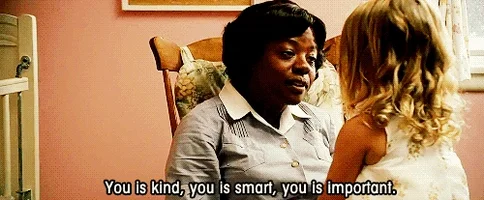The most successful marketing campaigns have well-defined goals that often involve trying to change minds.
Sometimes, it’s done in relatively minor ways. After engaging with a marketing campaign, you might decide to try a new shampoo brand — even after swearing you’d stay loyal to the one you’d used for years.
Marketing campaigns compel people to take action more quickly than planned. If you hear about how a new fast food restaurant serving healthy fare is offering a 50 percent discount this weekend only, you might decide to stop by soon, even if you’d previously decided you’d go eventually but weren’t prioritizing it.
In other cases, marketing campaigns work to change long-held views by making people think beyond prior perceptions. Below, we’ll look at four that did just that and captured national attention in the process.
They Connect Current Events With Shared Emotions or Memories

Courtesy of Giphy
Great marketing campaigns tap into emotions and memories we all share. They help us deal with the frustration that stems from going too long between meals or the bliss of finally going on a long-awaited vacation. They can bring up things we remember from days past and tie them into things that are going on now.
Greenpeace’s LEGO Block Shell campaign did that to alert people about the dangers of Shell drilling for oil in the Arctic, urging individuals to sign a petition encouraging LEGO to end its contract with the oil company.
In a related YouTube video, viewers see elaborate and cheerful LEGO scenes that make them think fondly of their childhoods and how LEGOs helped them unleash their creative abilities. Things take a dark turn when oil seeps onto the LEGOs and swallows up the pieces.
Cleverly, this is all set to a soundtrack of the “Everything Is Awesome” song from The LEGO Movie, performed in a slow, melodramatic style.
In addition to a YouTube video that racked up over seven million views and counting, the campaign ultimately achieved its goal, causing LEGO to end a Shell partnership that had existed since the 1960s and involved LEGO playsets being distributed at gas stations.
This campaign worked well because most of the people who saw the campaign video had played with LEGO blocks before — or had children who do today — which made the material more resonant.
They Show the Value of Listening to People With Different Views

Courtesy of Giphy
It’s not easy to listen to people who have drastically different views, especially if the mindsets are offensive on a personal level. Recently, the captivating Worlds Apart campaign by Heineken set out to answer, “Is there more that unites than divides us?”
A YouTube ad begins with statements from people with opposing views on things like climate change, feminism and transgender individuals. It then shows an experiment set in a warehouse that puts two strangers together. Each of them thinks differently, unbeknownst to the other, yet they successfully work together to build a table and chairs and go through a Q&A session to learn more about each other. The Q&A session, in particular, shows them they share a lot in common.
Next, the pairs create a bar and are asked to take bottles of Heineken and place them on it. A voice over a sound system instructs the participants to watch a short film. It includes damning statements from people who were previously getting along well in the earlier phases of the experiment.
The voice says the individuals can choose to leave or discuss their differences over beers. All involved do the latter, and there are even indications of new friendships.
By encouraging people to sit down and converse while sipping bottles of Heineken, the campaign emphasizes the good results that can come from people agreeing to hear each other out instead of trying to make their own views the loudest of all. The YouTube ad for this campaign has gotten over 11 million views and significant amounts of deserving media attention.
They Dispel Preconceived Notions
Some view-altering marketing campaigns especially gain traction on social media. A powerful one boldly dealt with the tough subject of school shootings.
Released by the Sandy Hook Promise Organization, a charity formed by people affected by the Sandy Hook school shooting, a video takes viewers through the story of a teen named Evan who begins an unexpected friendship with a mystery person he converses with by scribbling notes on a desk.
Just as Evan finally meets the person he had been communicating with all year, a school shooter barges in. Then, the video rewinds to show that the shooter was in every scene of the video doing everyday activities. He went unnoticed because he wasn’t the focal point.
Fueled by strong feelings, many people form a belief that there were no signs of trouble before shooters carry out their plans. However, as the video proves, the indicators are often there if people know what to look for and are vigilant. In the video, the eventual shooter posed with a gun on social media.
They Broaden Opinions About Body Image

Courtesy of Giphy
Until the Dove Real Beauty campaign made waves about what constitutes a beautiful body, seemingly perfect people with toned muscles, blemish-free skin and no excess fat dominated most media outlets. However, Dove set a trend many other brands followed, and made people open their minds about body image.
The #AerieREAL gained particular attention for the way it pledged to use models that were untouched by Photoshop. Consumers responded positively through consistent social media mentions, brand growth and increased sales. The reality is, we don’t all have flawless bodies, and that’s okay.
Aerie’s campaign is notable because it offers transparency and inspires trust while promoting body-related diversity.
When views change, society at large can, too. The campaigns spotlighted above took risks and explored tricky topics, all for worthwhile payoffs.
About The Author
Eleanor Hecks is the Editor-in-Chief of Designerly Magazine, an online publication dedicated to providing in-depth content from the design and marketing industries. When she's not designing or writing code, you can find her exploring the outdoors with her husband and dog in their RV, burning calories at a local Zumba class, or curled up with a good book with her cats Gem and Cali.
You can find more of Eleanor's work at www.eleanorhecks.com.


